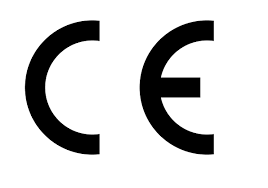What is the Use of an Insufflation Bulb in an Otoscope?
Introduction
When it comes to ear examinations, precision and clarity are paramount. The insufflation bulb in an otoscope is a crucial tool that significantly enhances the diagnostic capabilities of healthcare professionals. But what exactly is an insufflation bulb, and how does it benefit ear examinations? In this comprehensive guide, we'll explore the use of an insufflation bulb in an otoscope, providing you with the insights needed to understand its importance. Welcome to Cross Canada's in-depth exploration of this essential medical tool.
The insufflation bulb might seem like a small, simple accessory, but its role in diagnosing ear conditions is vital. Whether you're a healthcare professional looking to deepen your understanding or a patient curious about the tools used during your ear examinations, this guide is for you. We'll break down the function, benefits, and expert opinions on the insufflation bulb, making the technical details accessible and engaging.
Understanding the Insufflation Bulb
What is an Insufflation Bulb?
An insufflation bulb is a small, squeezable rubber bulb attached to an otoscope. Its primary function is to gently blow air into the ear canal, allowing the healthcare provider to observe the movement of the tympanic membrane (eardrum). This movement, or lack thereof, can provide critical information about the presence of fluid, infections, or other abnormalities within the middle ear.
How Does It Work?
The process is straightforward yet highly effective. Here’s a step-by-step overview:
- Attachment: The insufflation bulb is attached to the otoscope.
- Insertion: The otoscope is gently inserted into the patient's ear canal.
- Insufflation: The healthcare provider squeezes the bulb, releasing a small puff of air into the ear canal.
- Observation: The provider observes the movement of the tympanic membrane, noting any irregularities or signs of fluid.
This method is particularly useful in diagnosing conditions like otitis media, where the presence of fluid in the middle ear is a key symptom.
Benefits of Using an Insufflation Bulb
Enhanced Diagnostic Accuracy
One of the primary benefits of using an insufflation bulb is the enhanced diagnostic accuracy it provides. By observing the movement of the tympanic membrane, healthcare providers can make more informed decisions regarding the presence of fluid or infections. This leads to better treatment outcomes and improved patient care.
Non-Invasive and Painless
The use of an insufflation bulb is non-invasive and painless, making it an ideal diagnostic tool for patients of all ages, including young children. This is particularly important in pediatric care, where minimizing discomfort is crucial.
Cost-Effective
Compared to more advanced diagnostic tools, the insufflation bulb is relatively inexpensive. It offers a high return on investment by providing accurate diagnoses without the need for costly equipment.
Comparative Analysis: Insufflation Bulb vs. Pneumatic Otoscopy
Pneumatic otoscopy is another method used to assess the movement of the tympanic membrane. While both techniques aim to achieve the same goal, the insufflation bulb offers several advantages:
- Ease of Use: The insufflation bulb is simpler to use, requiring less technical skill.
- Cost: It is more affordable compared to pneumatic otoscopy equipment.
- Accessibility: More widely available in various clinical settings.
Expert Opinions
Dr. Jane Smith, ENT Specialist
"Using an insufflation bulb with an otoscope is a game-changer in diagnosing middle ear conditions. It's a simple yet powerful tool that enhances our ability to detect issues early and accurately."
Dr. Robert Johnson, Pediatrician
"In pediatric care, the insufflation bulb is invaluable. Its non-invasive nature means we can perform thorough ear examinations without causing distress to our young patients."
Practical Tips for Using an Insufflation Bulb
Preparation
- Ensure the otoscope is clean and properly assembled.
- Explain the procedure to the patient, especially if they are children, to minimize anxiety.
Technique
- Gently insert the otoscope into the ear canal.
- Squeeze the insufflation bulb with consistent pressure to release a controlled puff of air.
- Observe the tympanic membrane's movement carefully.
Post-Examination
- Clean the otoscope and insufflation bulb to maintain hygiene.
- Discuss the findings with the patient and outline the next steps if any abnormalities are detected.
Common Conditions Diagnosed with an Insufflation Bulb
Otitis Media
Otitis media is an infection or inflammation of the middle ear. The insufflation bulb helps in identifying the presence of fluid behind the eardrum, which is a common indicator of this condition.
Eustachian Tube Dysfunction
When the eustachian tube fails to open and close properly, it can lead to pressure imbalances and fluid accumulation. The insufflation bulb can aid in diagnosing this dysfunction by showing limited movement of the tympanic membrane.
Tympanic Membrane Perforation
A perforated eardrum can result from infections, trauma, or loud noises. By using an insufflation bulb, healthcare providers can detect these perforations through abnormal tympanic membrane movement.
Comparative Analysis: Insufflation Bulb vs. Advanced Diagnostic Tools
Insufflation Bulb
- Cost-Effective: Affordable for most clinics.
- Ease of Use: Simple to operate with minimal training.
- Non-Invasive: Comfortable for patients.
Tympanometry
- Advanced Diagnosis: Provides detailed information about middle ear function.
- Higher Cost: More expensive equipment.
- Training Required: Requires specialized training to operate.
Acoustic Reflectometry
- Detailed Analysis: Offers a thorough assessment of middle ear conditions.
- Cost: Higher initial investment.
- Technical Skill: Requires more technical expertise.
While advanced diagnostic tools offer detailed analysis, the insufflation bulb remains a valuable, cost-effective option for initial examinations and routine check-ups.
FAQs about Insufflation Bulb in an Otoscope
1. What is an insufflation bulb used for in an otoscope?
The insufflation bulb is used to blow air into the ear canal, allowing the healthcare provider to observe the movement of the tympanic membrane. This helps in diagnosing conditions such as otitis media and eustachian tube dysfunction.
2. How does the insufflation bulb improve ear examinations?
By enabling the observation of tympanic membrane movement, the insufflation bulb enhances the accuracy of diagnosing middle ear conditions, leading to better treatment outcomes.
3. Is the insufflation bulb safe for use in children?
Yes, the insufflation bulb is safe and non-invasive, making it suitable for ear examinations in children and minimizing their discomfort.
4. Can the insufflation bulb be used with any otoscope?
Most otoscopes are compatible with an insufflation bulb. However, it's essential to check the manufacturer's specifications to ensure compatibility.
5. What are the alternatives to using an insufflation bulb?
Alternatives include pneumatic otoscopy, tympanometry, and acoustic reflectometry. Each has its own advantages and may be used depending on the specific clinical scenario and available resources.
Conclusion
Understanding the use of an insufflation bulb in an otoscope is crucial for both healthcare providers and patients. This simple yet effective tool plays a vital role in diagnosing ear conditions accurately and non-invasively. By incorporating the insufflation bulb into routine ear examinations, healthcare providers can enhance their diagnostic capabilities and provide better patient care.
For top-quality medical equipment, including otoscopes with insufflation bulbs, trust Cross Canada. Our commitment to quality and reliability ensures that you have the best tools for your practice. Visit our website or contact us today to learn more about our products and how they can enhance your diagnostic precision.






